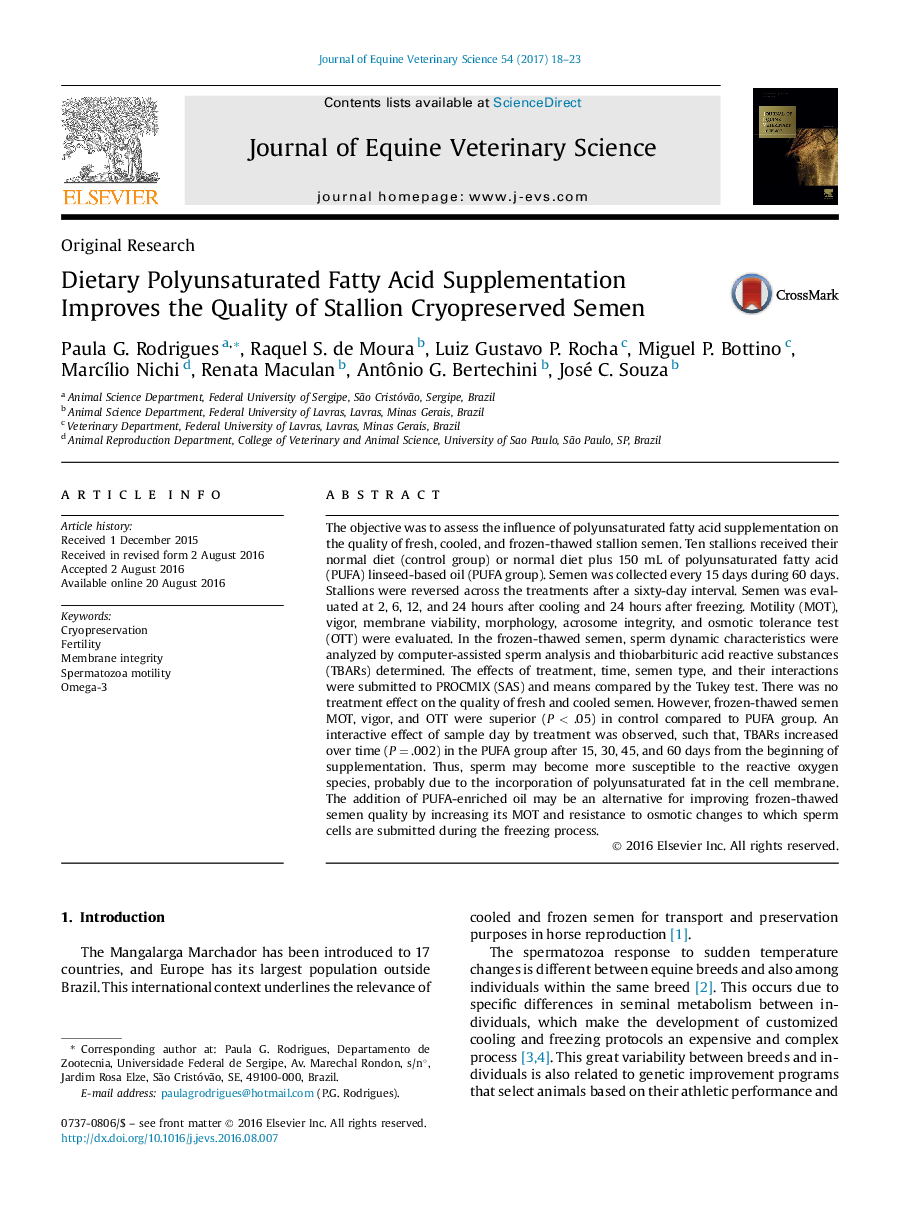| Article ID | Journal | Published Year | Pages | File Type |
|---|---|---|---|---|
| 5535615 | Journal of Equine Veterinary Science | 2017 | 6 Pages |
â¢The addition of polyunsaturated fatty acid to stallion diets does not alter the characteristics of fresh or cooled semen.â¢Polyunsaturated fatty acid improves frozen-thawed semen motility, velocity, and osmotic tolerance.â¢The addition of polyunsaturated fatty acid did not increase sperm susceptibility to the oxidative damage.
The objective was to assess the influence of polyunsaturated fatty acid supplementation on the quality of fresh, cooled, and frozen-thawed stallion semen. Ten stallions received their normal diet (control group) or normal diet plus 150Â mL of polyunsaturated fatty acid (PUFA) linseed-based oil (PUFA group). Semen was collected every 15 days during 60Â days. Stallions were reversed across the treatments after a sixty-day interval. Semen was evaluated at 2, 6, 12, and 24Â hours after cooling and 24Â hours after freezing. Motility (MOT), vigor, membrane viability, morphology, acrosome integrity, and osmotic tolerance test (OTT) were evaluated. In the frozen-thawed semen, sperm dynamic characteristics were analyzed by computer-assisted sperm analysis and thiobarbituric acid reactive substances (TBARs) determined. The effects of treatment, time, semen type, and their interactions were submitted to PROCMIX (SAS) and means compared by the Tukey test. There was no treatment effect on the quality of fresh and cooled semen. However, frozen-thawed semen MOT, vigor, and OTT were superior (P < .05) in control compared to PUFA group. An interactive effect of sample day by treatment was observed, such that, TBARs increased over time (P = .002) in the PUFA group after 15, 30, 45, and 60Â days from the beginning of supplementation. Thus, sperm may become more susceptible to the reactive oxygen species, probably due to the incorporation of polyunsaturated fat in the cell membrane. The addition of PUFA-enriched oil may be an alternative for improving frozen-thawed semen quality by increasing its MOT and resistance to osmotic changes to which sperm cells are submitted during the freezing process.
